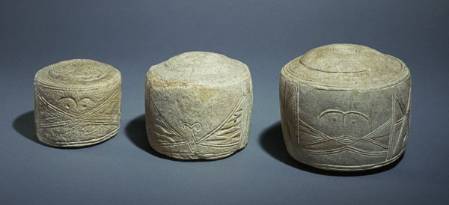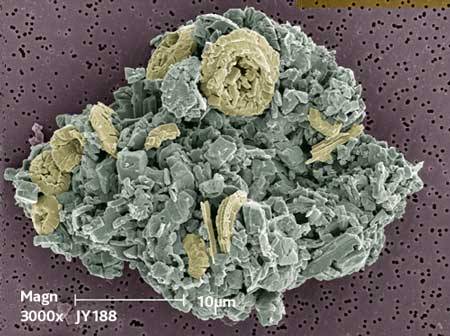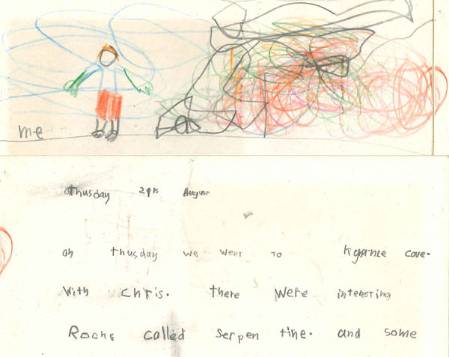It feels strange recommending readers to go to another museum. However, this is a great example of the application of Micropalaeontology to archaeological studies and the use of our nannofossil collection. My colleague Tom Hill has just returned from a meeting on 'Geological applications in Archaeology' so this subject is receiving a lot of interest at the moment.
Just before Christmas I had an enquiry from the British Museum asking me to provide a high definition image of a nannofossil for their multimedia gallery guides. The image was taken by my former colleague Jeremy Young as part of research on the Folkton Drums published in the journal Antiquity in 2004 with British Museum staff Andrew Middleton and Janet Ambers.
These carved stone cylinders known as the Folkton Drums were found associated with a child's burial site at Folkton near Filey northeast Yorkshire. The diameter of the largest is 146mm and they are made of incised stone with a grooved ware pottery design indicating a probable Later Neolithic age of about 2,500-2,000 BC.
 The Folkton Drums. Image copyright: The Trustees of the British Museum, ref AN155870001, registration number 1893,1228.15.
The Folkton Drums. Image copyright: The Trustees of the British Museum, ref AN155870001, registration number 1893,1228.15.
Nannofossils and the museum collection
Jeremy Young was asked to analyse a very small amount of material removed from a blemish on the bottom of the smallest item. At the time it was not known if the stone was chalk or magnesian limestone. Chalk contains the remains of tiny calcareous coccolith plates formed by a unicellular plant called a coccolithophore. These are present in the oceans of today and are widely used for studies on recent changes to our oceans and environment.
The Museum houses a large collection of fossil and recent coccolith preparations, and images made by Jeremy Young. Because most coccoliths are less than a thousandth of a millimetre in size, it is very difficult to isolate them as individual specimens or to find the same specimen again even using a scanning electron microscope. As a result, images are just as important as the preparations from which the images were made and species are often defined by images alone. We have a collection of tens of thousands of such images.
A false coloured scanning electron microscope image of the fragment of Folkton Drum analysed by Jeremy Young.
The scale bar is 10 microns which is 0.01 mm.
What the nannofossils told us?
The fragment contained a typical late Cretaceous coccolith assemblage dominated by Watznaueria barnesae, Biscutum constans and Prediscosphaera cretacea. The species Micula staurophora suggests a Coniacean-Masstrichtian age of the Cretaceous (c. 65-85 Mya). The coccolith evidence suggests that the drums were made from deposits of the Upper Chalk rather than Magnesian Limestone.
Chalk is available locally and Magnesian Limestone from deposits about 45kms away. However, the results cannot show for certain that the chalk used was derived locally as the outcrop of the Upper Chalk Formation covers a large area of England. A non-destructive method called Raman Spectroscopy used by Janet Ambers at the British Museum also confirmed a chalk rather than Magnesian Limestone composition.
Where to see them?
The Folkton Drums can been seen in Gallery 51 at the British Museum. The nannofossil image is shown as part of the British Museum multimedia guide available in 11 different languages on request. If you are interested in the subject of 'Geological applications in Archaeology' then further details can be found via the University of Leicester web site.




